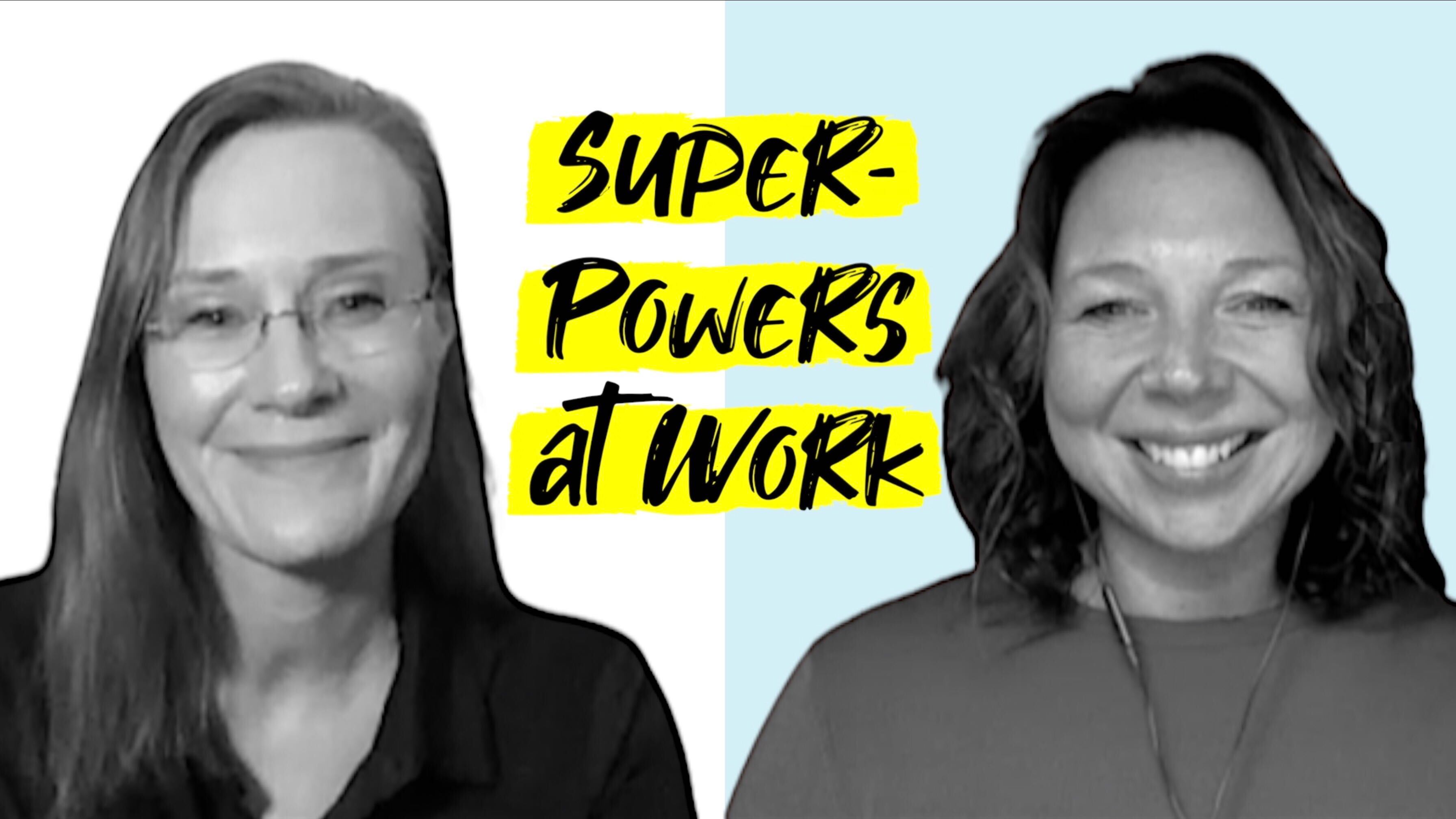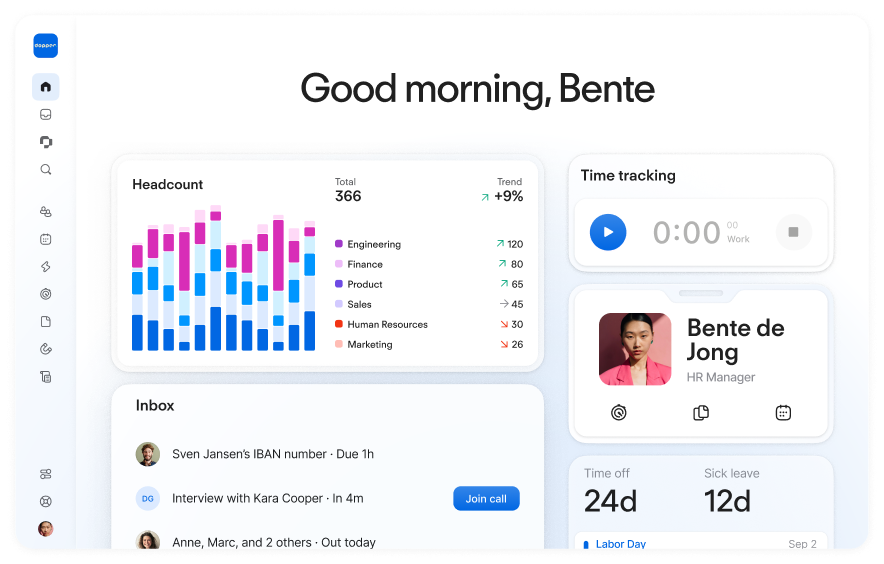28. December 2020
HR Expert Interview: Unlocking Superpowers at Work with Hilary Klassen

How do you unlock, and subsequently harness, your ‘superpowers' at work? In that same vein, how do organizations do the same to create teams of high performers who are engaged, motivated, and prepared to do their best work?
In our latest Expert Interview, Laura Schroeder, Head of Brand at Personio, spoke with Hilary Klassen, Co-Founder and CEO at Bestselfy. Together, they discussed how individuals, leaders, and companies can elevate the work they do by focusing on their strengths (and building from there).
Download our latest whitepaper on business resilience today.Identifying & Building Strengths
The fact is that there are so many tools out there to help assess people’s strengths, personalities, and unique working styles. But, when it’s all said and done, what do you do with that information to bring about real change?
How do you put those identified strengths to work, both for employees and for companies? That’s a key factor in Hilary Klassen’s work, where she strives to help people (and organizations) figure out how to use their strengths in a meaningful way.
So, it helps to look at things in a holistic fashion. Starting with the individual and moving all the way out to the entire organization. What defines Hilary’s process? Here’s how it works…
Strengths On An Individual Level
Let’s begin with a single employee. It all starts by assessing their strengths or working style, but the next step is crucial (and that there is a next step at all, of course).
Hilary puts forth the challenge: How, as an employee, do you make your strengths work for you and put yourself in a position where they can shine?
In her own words, "You need to acknowledge these strengths, those raw talents, and still think about what skills, experience, and knowledge you need to really evolve."
So, while we start at identification, the next stage is about adding focus. Focusing on what you do well, and emphasizing the work that goes into really understand what is happening in that situation, and how you feel about it or react to it.
It can be as simple as asking around. Solicit advice from your colleagues, your friends, your family members, about where they see you taking your skills to the next level. Then, start on this journey as an embedded form of practice.
In Hilary’s experience, this is particularly fruitful when it comes to managers. Beginning with a more candid, one-on-one approach can be especially illuminating.
In short, as an individual, it helps to think in three unique stages:
This is where I see myself.
I can see myself evolving in the following ways.
How can I bring my strengths into my work to make that evolution possible?
Ultimately, in Hilary’s experience, it all comes down to enjoying what you’re doing and allowing your strengths to play to that passion.
What About Leaders?
How can leaders help the people on their teams ensure they are playing to their strengths? What kind of advice does Hilary have for us in this regard?
Managers have to carry discussions while living their values if they want a more collaborative work environment. In short, it starts with you and you need to work toward it.
As Hilary puts it, “To have these conversations with your people, it is really about having them understand when they have used their strengths, what it looks like if you use them more, and which you want them to dial up and dial down.”
It not only becomes about specificity but productive examples in the context of strengths you want to promote and even the ones you may want to dissuade. In this case, it also helps to be keenly aware of what is going on around you.
You also need to know when you are not at your best and why that is the case so that you don’t come into discussions with a biased perspective. Having these discussions and emphasizing this awareness is always helpful for leaders.
Lastly, you need to actively create teams. You need to have communication platforms, give kudos and positive enforcement, and be specific in how you acknowledge someone’s strengths so that they have a ‘template’ to live that strength time and again.
Watch the full interview here:
HR Expert Interview: Superpowers at Work

We need your consent to load this service!
This content is not permitted to load due to trackers that are not disclosed to the visitor.
How Can Companies Get The Best Out Of Employees?
Finally, how can companies utilize assessment tools to get the best out of their employees? This way, they avoid having an assessment with no follow-up (or, subsequently, no follow-through from the employee’s side).
Is there a way to elevate strengths, across the business, to drive performance across the board? In Hilary’s experience, it is always possible.
As she explains, we mustn’t focus solely on skills, but specifically helping people bring their natural ‘superpowers’ into play.
That begins by defining what these superpowers are, as well as making them actionable. She cautions that we too often fall back on generalized tendencies when companies need to focus on individualizing talents and building strengths-based organizations.
In sum, this is a key weapon that companies have access to in order to help them thrive. After all, many people want to say that they work somewhere that is diverse, where they feel a sense of belonging, and where they are empowered to thrive on their own terms. In short, they get to do what they do best.
As a company, enabling that feeling is incredibly valuable. But, you need a structure to execute that vision.
Hilary puts it best, “Organizations that are able to be as flexible as possible, align the right talents, and let people play to their strengths, [these companies] are going to be fundamentally better able to adapt with technology, data, and the world that is changing before our eyes.”
If this is the future of how people work together, organizations play a key role in facilitating that work. Ultimately, they help set the stage for strengths-based success.
Unlock Your Team’s Superpowers Today
While the structure of teams is bound to ebb and flow, Hilary mentions ideally having an alignment of different strengths to be able to have a much higher level of productivity and innovation. This will ensure that companies evolve with the times.
All in all, building a strengths-based organization is absolutely the way to go. Starting with the company, to its leaders, and right down to the individual. It all matters, and it all contributes to making a difference in business.
